I have an interesting situation in SQL Server 2016. I am using T-SQL language.
I have a dataset called (#dataset):
The last column called ContinuousDates will ALWAYS have continuous date values without a gap, say Jan 1, 2021 to Dec 31, 2021. It will NEVER have duplicate dates for the same ID or Name, i.e. one person on a given day can have only one row of data. (In this example, I am showing just one person, with ID = 1 and Name = X. In my actual data, I have multiple people).
Note that NYC city occurs earlier in the dataset, and gets repeated in the last 4 rows.
I need to obtain the below dataset based on date range:
I tried to use a simple MINIMUM and MAXIMUM on the dataset, but I realize that at times I can get a wrong output, as below:
I tried some options using RANK() and DENSE_RANK() functions, but am not able to come to a solution. Can someone provide me assistance ?
I have the codes attached here:
CREATE TABLE #dataset
(
ID int,
Name varchar(20),
City varchar(20),
ContinuousDates date
)
INSERT INTO #dataset
VALUES(1,'X','NYC','1/1/2021')
INSERT INTO #dataset
VALUES(1,'X','NYC','1/2/2021')
INSERT INTO #dataset
VALUES(1,'X','NYC','1/3/2021')
INSERT INTO #dataset
VALUES(1,'X','SFO','1/4/2021')
INSERT INTO #dataset
VALUES(1,'X','SFO','1/5/2021')
INSERT INTO #dataset
VALUES(1,'X','PHY','1/6/2021')
INSERT INTO #dataset
VALUES(1,'X','PHY','1/7/2021')
INSERT INTO #dataset
VALUES(1,'X','PHY','1/8/2021')
INSERT INTO #dataset
VALUES(1,'X','NYC','1/9/2021')
INSERT INTO #dataset
VALUES(1,'X','NYC','1/10/2021')
INSERT INTO #dataset
VALUES(1,'X','NYC','1/11/2021')
INSERT INTO #dataset
VALUES(1,'X','NYC','1/12/2021')
SELECT *
FROM #dataset
ORDER BY ContinuousDates
I have a new set of codes, for a better demonstration:
CREATE TABLE #dataset
(
ID int,
Name varchar(20),
City varchar(20),
ContinuousDates date
)
INSERT INTO #dataset
VALUES(1,'X','NYC','1/1/2021')
INSERT INTO #dataset
VALUES(1,'X','NYC','1/2/2021')
INSERT INTO #dataset
VALUES(1,'X','NYC','1/3/2021')
INSERT INTO #dataset
VALUES(1,'X','SFO','1/4/2021')
INSERT INTO #dataset
VALUES(1,'X','SFO','1/5/2021')
INSERT INTO #dataset
VALUES(1,'X','PHY','1/6/2021')
INSERT INTO #dataset
VALUES(1,'X','PHY','1/7/2021')
INSERT INTO #dataset
VALUES(1,'X','PHY','1/8/2021')
INSERT INTO #dataset
VALUES(1,'X','NYC','1/9/2021')
INSERT INTO #dataset
VALUES(1,'X','NYC','1/10/2021')
INSERT INTO #dataset
VALUES(1,'X','NYC','1/11/2021')
INSERT INTO #dataset
VALUES(1,'X','NYC','1/12/2021')
INSERT INTO #dataset
VALUES(2,'Y','MEL','1/13/2021')
INSERT INTO #dataset
VALUES(3,'Z','SYD','1/14/2021')
INSERT INTO #dataset
VALUES(3,'Z','SYD','1/15/2021')
INSERT INTO #dataset
VALUES(3,'Z','PER','1/16/2021')
INSERT INTO #dataset
VALUES(4,'A',NULL,'1/16/2021')
INSERT INTO #dataset
VALUES(4,'A', NULL,'1/17/2021')
SELECT *
FROM #dataset
ORDER BY ID, ContinuousDates


